
Tasman Peninsula: A Natural Wonderland
Discover the Tasman Peninsula: A blend of natural splendor, historical intrigue, and outdoor adventure in Australia's southeastern corner.
The Tasman Peninsula in Australia is a stunning region known for its dramatic coastal scenery, rich history, and diverse wildlife. It's located in the southeastern part of Tasmania and offers visitors a chance to explore some of the most breathtaking landscapes in the country. From towering sea cliffs and unique geological formations to pristine beaches and lush forests, the natural beauty of the Tasman Peninsula is truly awe-inspiring. The area is also home to the famous Port Arthur Historic Site, a former convict settlement that provides a fascinating glimpse into Australia's colonial past. Visitors can wander through the well-preserved ruins and learn about the harsh conditions experienced by the convicts. For those interested in more recent history, the region also boasts several charming small towns, each with its own unique character and stories to tell. Outdoor enthusiasts will find plenty to do on the Tasman Peninsula, with numerous hiking trails, kayaking opportunities, and wildlife spotting tours available. The Tasman National Park is a highlight, offering a variety of walks that showcase the peninsula's natural beauty, including the popular Three Capes Track. Whether you're looking to immerse yourself in nature, delve into history, or simply relax and take in the views, the Tasman Peninsula is a must-visit destination.
Local tips in Tasman Peninsula
- Visit the Port Arthur Historic Site early in the day to avoid crowds and have a more immersive experience.
- Pack sturdy walking shoes for the hiking trails, as some paths can be rugged and steep.
- Bring a camera or smartphone with a good zoom lens to capture the stunning coastal views and wildlife.
- Check the weather forecast before planning outdoor activities, as conditions can change rapidly.
- Consider joining a guided tour to learn more about the area's history and natural features from knowledgeable locals.
Tasman Peninsula: A Natural Wonderland
The Tasman Peninsula in Australia is a stunning region known for its dramatic coastal scenery, rich history, and diverse wildlife. It's located in the southeastern part of Tasmania and offers visitors a chance to explore some of the most breathtaking landscapes in the country. From towering sea cliffs and unique geological formations to pristine beaches and lush forests, the natural beauty of the Tasman Peninsula is truly awe-inspiring. The area is also home to the famous Port Arthur Historic Site, a former convict settlement that provides a fascinating glimpse into Australia's colonial past. Visitors can wander through the well-preserved ruins and learn about the harsh conditions experienced by the convicts. For those interested in more recent history, the region also boasts several charming small towns, each with its own unique character and stories to tell. Outdoor enthusiasts will find plenty to do on the Tasman Peninsula, with numerous hiking trails, kayaking opportunities, and wildlife spotting tours available. The Tasman National Park is a highlight, offering a variety of walks that showcase the peninsula's natural beauty, including the popular Three Capes Track. Whether you're looking to immerse yourself in nature, delve into history, or simply relax and take in the views, the Tasman Peninsula is a must-visit destination.
When is the best time to go to Tasman Peninsula?
Iconic landmarks you can’t miss
Port Arthur Historic Site
Explore the haunting beauty and rich history of Port Arthur Historic Site, a UNESCO World Heritage treasure in Tasmania that reveals Australia’s convict past.

The Neck Game Reserve Lookout
Experience the stunning vistas and natural beauty of The Neck Game Reserve Lookout on North Bruny Island, a must-visit destination in Tasmania.

Tessellated Pavement
Explore the stunning Tessellated Pavement in Tasmania, where nature's artistry meets breathtaking coastal views, perfect for adventurers and photographers.

Port Arthur Lavender
Experience the beauty and tranquility of Port Arthur Lavender, a unique Tasmanian gem offering stunning gardens, delicious cuisine, and memorable shopping.

Wineglass Bay Lookout
Discover the stunning vistas of Wineglass Bay Lookout, a magnificent spot within Freycinet National Park, perfect for hiking and capturing picturesque moments.

Remarkable Cave
Discover the breathtaking Remarkable Cave in Tasmania's National Park, where stunning views and unique geological features await adventurous tourists.
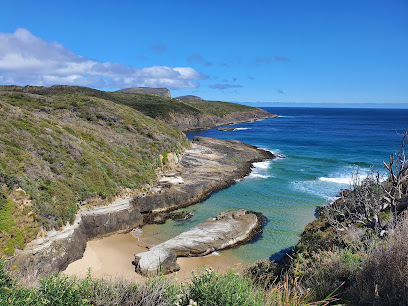
Blow Hole
Witness the majestic Blow Hole in Eaglehawk Neck, Tasmania – a stunning natural attraction where ocean waves create breathtaking geysers.
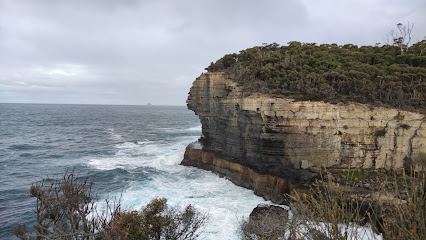
Tasmanian Devil Unzoo
Experience Tasmanian wildlife like never before at the Tasmanian Devil Unzoo, where conservation meets adventure in a stunning natural setting.

Tasmans Arch
Explore Tasmans Arch: A stunning rock formation on Tasmania's Tasman Peninsula, perfect for nature lovers and photography enthusiasts.

Rosny Hill Lookout
Discover the stunning Rosny Hill Lookout, a serene spot to enjoy panoramic views of the Derwent River and the beautiful Tasmanian landscape.
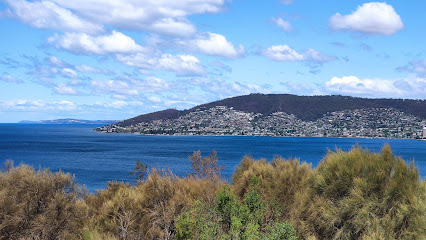
Tasman Island Cruises
Discover breathtaking cliffs, unique wildlife, and Australia's highest lighthouse with Tasman Island Cruises in beautiful Tasmania.

Devils Kitchen
Discover the breathtaking cliffs and stunning ocean views at Devils Kitchen, a natural wonder on Tasmania's iconic Tasman Peninsula.
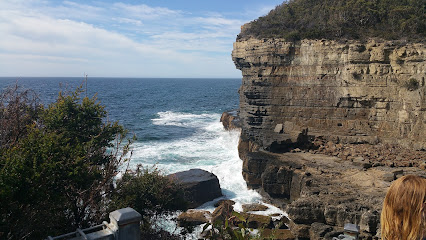
Tasman National Park
Discover the breathtaking landscapes and diverse wildlife of Tasman National Park in Tasmania, a must-visit destination for nature lovers and adventure seekers.

Coal Mines Historic Site
Discover the Coal Mines Historic Site – a fascinating blend of Tasmania's convict history and breathtaking natural landscapes perfect for every traveler.

Bruny Island
Explore Bruny Island's breathtaking landscapes, rich wildlife, and gourmet culinary delights on your unforgettable Tasmanian adventure.

Unmissable attractions to see
Tessellated Pavement
Explore the breathtaking Tessellated Pavement in Tasmania, a unique natural wonder showcasing stunning geological formations and coastal beauty.

Remarkable Cave
Explore the stunning Remarkable Cave in Port Arthur, a hidden gem with breathtaking views and rich maritime history in Tasmania.

Blow Hole
Experience the awe-inspiring Blow Hole in Eaglehawk Neck, Tasmania, where nature's power meets captivating coastal beauty.

Tasman Arch
Explore the breathtaking Tasman Arch, a stunning natural rock formation on Tasmania's beautiful coastline, perfect for photography and nature lovers alike.

Elizabeth Street Mall
Experience the vibrant shopping and dining scene at Elizabeth Street Mall, the heart of Hobart's retail and cultural landscape.

Devils Kitchen
Experience the breathtaking views and natural wonders at Devils Kitchen, a must-visit tourist attraction on Tasmania's stunning Tasman Peninsula.

Tasman National Park
Experience the breathtaking natural beauty of Tasmania at Tasman National Park, home to stunning landscapes, diverse wildlife, and thrilling outdoor adventures.
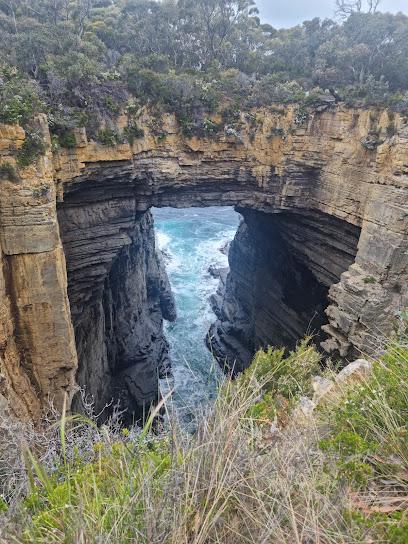
Coal Mines Historic Site
Explore the historical depths and scenic beauty of Tasmania's Coal Mines Historic Site, a unique blend of nature and history.

Ja & Jon Banh Mi
Experience authentic Vietnamese cuisine at Ja & Jon Banh Mi, where fresh ingredients and rich flavors come together in Hobart's vibrant dining scene.

Bangkok City
Experience authentic Thai cuisine at Bangkok City, Hobart's premier destination for vibrant flavors and unforgettable dishes.

Tasman National Park Lookout
Experience the stunning vistas of the Tasman National Park Lookout, where breathtaking scenery and nature's beauty come together in Tasmania.

Goat Bluff Lookout
Discover breathtaking panoramas and the iconic Iron Pot lighthouse at Goat Bluff Lookout in Tasmania, a must-see for all nature lovers and photographers.

Port Arthur Ghost Tours
Explore the haunting history of Port Arthur with thrilling ghost tours that reveal chilling tales and supernatural encounters in Australia's most notorious penal colony.

Tassie Tours Tasmania
Discover the beauty of Tasmania with expert-guided tours from Tassie Tours, your gateway to adventure and exploration in Tasmania.

The Penitentiary
Discover the haunting beauty and rich history of The Penitentiary in Port Arthur, a UNESCO World Heritage Site and a key part of Australia's convict heritage.

Essential places to dine
Port Arthur Historic Site
Discover Australia's convict past at Port Arthur Historic Site - a captivating blend of history and natural beauty.

Get Shucked
Experience the best oysters on Bruny Island at Get Shucked – where freshness meets flavor in a breathtaking setting.

Port Arthur Lavender
Experience the tranquility of Port Arthur Lavender with its breathtaking fields, delightful café treats, and unique gift shop offerings in Tasmania.

Barilla Bay Oyster Farm
Experience fresh Tasmanian oysters at Barilla Bay Oyster Farm – where sustainability meets culinary excellence amidst stunning bay views.
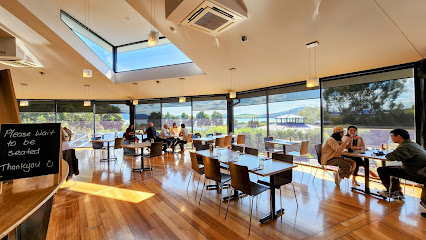
The Beach House
Experience exquisite Tasmanian cuisine at The Beach House in Blackmans Bay, where stunning ocean views meet fresh local flavors.

The Cannery
Discover the culinary delights of Dunalley at The Cannery, where fresh local ingredients meet exquisite flavors in a charming setting.

The Signal Station Restaurant
Experience culinary excellence with stunning views at The Signal Station Restaurant in Mount Nelson, Tasmania.
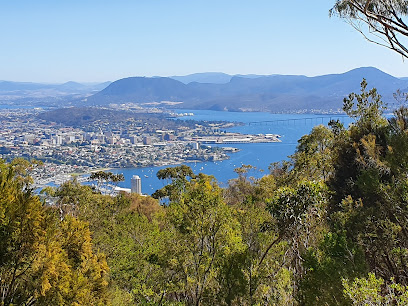
Driftwood Restaurant
Discover Driftwood Restaurant in Lauderdale - where modern Australian cuisine meets breathtaking coastal views for an unforgettable dining experience.

Lufra Hotel and Apartments
Experience breathtaking views and exceptional comfort at Lufra Hotel and Apartments in Eaglehawk Neck, Tasmania – your gateway to adventure!

1830 Restaurant and Bar, Port Arthur
Discover exceptional dining at 1830 Restaurant and Bar, where history meets culinary artistry in Port Arthur.

On the Bay Restaurant
Experience exquisite Tasmanian cuisine with breathtaking views at On the Bay Restaurant in Port Arthur.

Doo-lishus
Discover authentic Australian flavors at Doo-lishus in Eaglehawk Neck—where Tasmanian cuisine meets stunning coastal views.
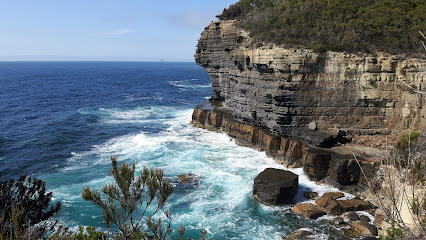
The Fox and Hounds Restaurant
Experience delightful dining at The Fox and Hounds Restaurant in Port Arthur, where local flavors meet stunning scenery.
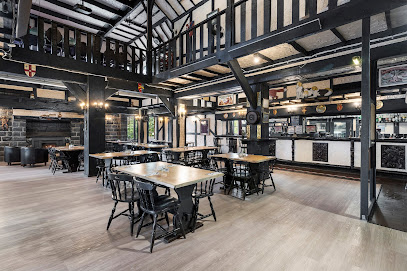
Blue Seal Seafood Shack
Discover authentic Tasmanian seafood delights at Blue Seal Seafood Shack—your go-to spot for delicious fish and chips in Eaglehawk Neck.

The Point Revolving Restaurant
Discover fine dining at The Point Revolving Restaurant in Sandy Bay, where exquisite cuisine meets breathtaking views of Tasmania's stunning coastline.
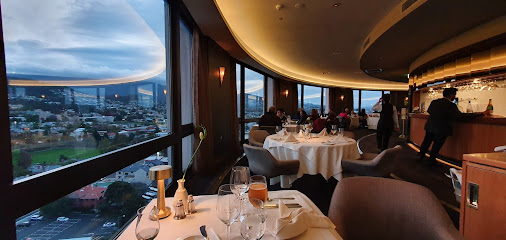
Markets, malls and hidden boutiques
Port Arthur Historic Site
Discover the rich convict history and stunning scenery of the Port Arthur Historic Site, a UNESCO World Heritage treasure in Tasmania.

Port Arthur Lavender
Experience the beauty and tranquility of Port Arthur Lavender, a serene escape in Tasmania with lavender fields, delightful cuisine, and unique gifts.

Remarkable Cave
Explore Tasmania's Remarkable Cave, a stunning natural attraction with breathtaking landscapes and unforgettable hiking experiences.

Elizabeth Street Mall
Experience the vibrant shopping scene at Elizabeth Street Mall in Hobart, where unique boutiques and local flavors await every visitor.

Bruny Island Honey
Discover the enchanting world of honey at Bruny Island Honey, where local flavors and sustainable practices meet in a sweet symphony.

Seven Mile Beach Store
Explore the charming Seven Mile Beach Store for local groceries and delightful coffee in Tasmania's beautiful beachside community.
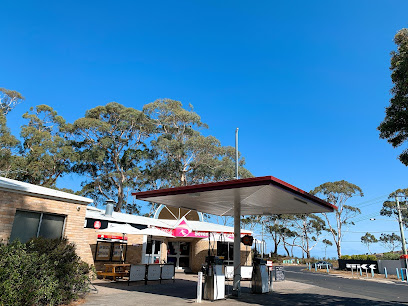
IGA X-Press Nubeena (Seabreeze)
Discover a culinary haven at IGA X-Press Nubeena, where local and Japanese groceries meet in Tasmania's charming supermarket.

Port Arthur General Store & Takeaways
Discover the charm of Port Arthur General Store & Takeaways, where local goods meet delicious fast food in the heart of Tasmania's historic landscape.

IGA Everyday Nubeena
Discover fresh local produce and quality groceries at IGA Everyday Nubeena, your essential stop during your Tasmanian adventure.
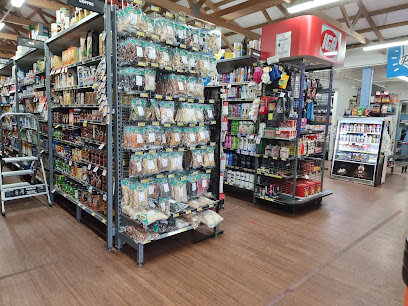
Smitten Merino
Explore unique Tasmanian fashion at Smitten Merino, a boutique clothing store offering luxurious merino wool garments in Battery Point.

Wild Island Tasmania
Discover the perfect blend of art and literature at Wild Island Tasmania, a haven for creative souls and literary enthusiasts in Battery Point.

Esplora Fashion
Discover unique European fashion at Esplora Fashion, a boutique clothing store in Hobart, Tasmania, offering quality garments and personalized service.

The Faerie Shop
Discover a whimsical gift shop in Margate, Tasmania, featuring enchanting souvenirs and handcrafted treasures for all ages.

Port Arthur Historic Site Gift Shop
Explore the Port Arthur Historic Site Gift Shop for unique souvenirs reflecting Tasmania's rich heritage and stunning natural beauty.
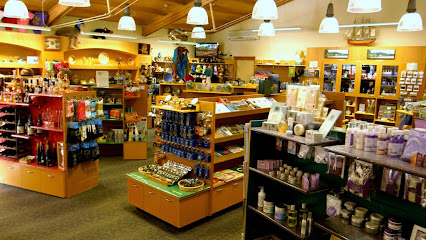
South East Tasmania Salvos Thrift Shop
Explore the vibrant South East Tasmania Salvos Thrift Shop for unique finds and support local charitable initiatives while enjoying budget-friendly shopping.

Essential bars & hidden hideouts
The Den Salamanca
Experience the vibrant atmosphere and exquisite flavors at The Den Salamanca, Hobart's premier cocktail bar and restaurant for every occasion.

The Whaler
Experience Tasmania's vibrant nightlife at The Whaler, a bar that offers a diverse drink selection and a warm, inviting atmosphere.
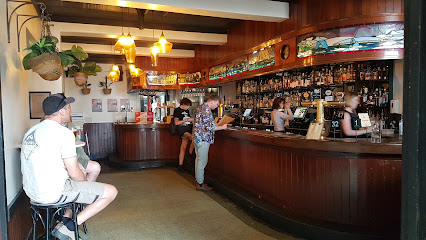
The Fox and Hounds Historic Hotel
Discover the historic charm of The Fox and Hounds Hotel in Port Arthur, Tasmania—a perfect blend of heritage and hospitality for every traveler.

Society Salamanca
Experience Tasmania's vibrant nightlife at Society Salamanca, where expertly crafted cocktails and a welcoming atmosphere await.

Midway Point Tavern
Experience the warmth of Tasmanian hospitality at Midway Point Tavern, where local flavors and a vibrant atmosphere await every visitor.

1830 Restaurant and Bar, Port Arthur
Discover exquisite dining in a historical setting at 1830 Restaurant and Bar, Port Arthur - where culinary art meets rich heritage.
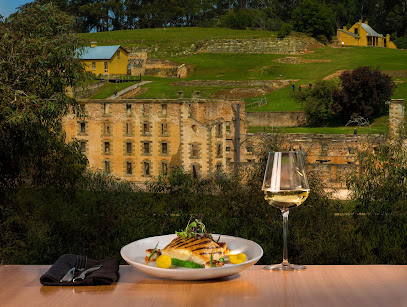
On the Bay Restaurant
Experience the best of Tasmanian cuisine at On the Bay Restaurant, where stunning views meet mouthwatering local flavors.

Dunalley Hotel
Experience the warmth of Tasmanian hospitality at Dunalley Hotel, a charming pub with local flavors and an inviting atmosphere.
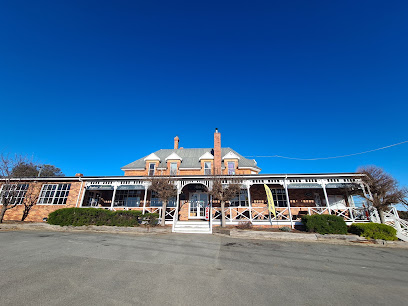
IXL Long Bar
Discover IXL Long Bar in Hobart: A lively cocktail bar with live music, offering an unforgettable nightlife experience in Tasmania.

The Fox and Hounds Restaurant
Experience authentic Tasmanian cuisine at The Fox and Hounds Restaurant in Port Arthur, where local flavors meet warm hospitality.

Mary Mary
Discover the vibrant cocktail scene at Mary Mary, Hobart's premier bar offering innovative drinks and a cozy atmosphere for every occasion.
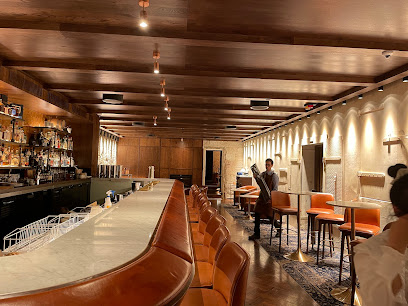
The Story Bar
Discover the vibrant atmosphere and exquisite cocktails at The Story Bar in Hobart, the perfect spot for relaxation and socializing.

Lucky Ducks Cafe
Experience delightful coffee and wholesome dishes at Lucky Ducks Cafe while enjoying stunning views of Parsons Bay in Tasmania.

McHenry Distillery
Experience the finest artisanal spirits at McHenry Distillery, where tradition meets flavor in the heart of Tasmania.

Nubeena Tavern
Discover Nubeena Tavern, a welcoming bar and restaurant in Tasmania offering delightful meals and a vibrant atmosphere for every visitor.

Local Phrases about Tasman Peninsula
-
- HelloG'day
[G'day] - GoodbyeSee ya
[See ya] - YesYeah
[Yeah] - NoNah
[Nah] - Please/You're welcomePlease/No worries
[Please/No worries] - Thank youTa
[Ta] - Excuse me/SorrySorry
[Sorry] - How are you?How ya goin'?
[How ya goin'?] - Fine. And you?Good. And you?
[Good. And you?] - Do you speak English?You speak English?
[You speak English?] - I don't understandI dunno
[I dunno]
- HelloG'day
-
- I'd like to see the menu, pleaseCan I check the menu?
[Can I check the menu?] - I don't eat meatI don't eat meat
[I don't eat meat] - Cheers!Cheers!
[Cheers!] - I would like to pay, pleaseCan I pay now?
[Can I pay now?]
- I'd like to see the menu, pleaseCan I check the menu?
-
- Help!Help!
[Help!] - Go away!Get lost!
[Get lost!] - Call the Police!Call the cops!
[Call the cops!] - Call a doctor!Get a doc!
[Get a doc!] - I'm lostI'm lost
[I'm lost] - I'm illI'm sick
[I'm sick]
- Help!Help!
-
- I'd like to buy...I wanna buy...
[I wanna buy...] - I'm just lookingJust lookin'
[Just lookin'] - How much is it?How much?
[How much?] - That's too expensiveToo dear
[Too dear] - Can you lower the price?Can you do it cheaper?
[Can you do it cheaper?]
- I'd like to buy...I wanna buy...
-
- What time is it?What's the time?
[What's the time?] - It's one o'clockIt's one
[It's one] - Half past (10)Half ten
[Half ten] - MorningMornin'
[Mornin'] - AfternoonArvo
[Arvo] - EveningEvenin'
[Evenin'] - YesterdayYesterday
[Yesterday] - TodayToday
[Today] - TomorrowTomorrow
[Tomorrow] - 1One
[One] - 2Two
[Two] - 3Three
[Three] - 4Four
[Four] - 5Five
[Five] - 6Six
[Six] - 7Seven
[Seven] - 8Eight
[Eight] - 9Nine
[Nine] - 10Ten
[Ten]
- What time is it?What's the time?
-
- Where's a/the...?Where's the...?
[Where's the...?] - What's the address?What's the address?
[What's the address?] - Can you show me (on the map)?Show me on the map?
[Show me on the map?] - When's the next (bus)?When's the next bus?
[When's the next bus?] - A ticket (to ....)A ticket to ...
[A ticket to ...]
- Where's a/the...?Where's the...?
History of Tasman Peninsula
-
The Tasman Peninsula has been inhabited for thousands of years by the Paredarerme people, an Aboriginal group who lived off the land and sea. Their rich culture is evident in the numerous middens, rock shelters, and cave art found throughout the region. The Paredarerme people had a deep connection with the land, relying on fishing, hunting, and gathering for sustenance.
-
In 1642, Dutch explorer Abel Tasman became the first European to sight the area. He named the island Anthoonij van Diemenslandt, later shortened to Van Diemen's Land. It wasn't until 1772 that French explorer Marc-Joseph Marion du Fresne charted the peninsula. The name 'Tasman Peninsula' honors Abel Tasman, reflecting the European influence on the region's nomenclature.
-
Port Arthur, established in 1830, became one of Australia's most notorious penal settlements. Designed as a place of secondary punishment for repeat offenders, it was intended to be inescapable due to its remote location and natural barriers like the narrow Eaglehawk Neck. The penitentiary, once housing up to 1,100 convicts, stands as a prominent historical landmark on the peninsula.
-
In 1834, a significant event occurred known as the 'Convict Rebellion'. Over 100 convicts attempted to escape from the Port Arthur penal settlement by overpowering the guards and seizing boats. Their plan failed when military reinforcements arrived, resulting in the capture and punishment of the rebels. This event highlighted the harsh conditions and the desperate measures convicts would take to gain their freedom.
-
The modern history of the Tasman Peninsula was forever marked by the tragic events of April 28, 1996, when a gunman opened fire at the Port Arthur Historic Site. The massacre resulted in the loss of 35 lives and injuries to 23 others, leading to a profound impact on the Australian community and a significant change in the country's gun laws. Today, the site includes a memorial garden to honor the victims.
-
Beyond its rich history, the Tasman Peninsula boasts stunning natural attractions. The Tasman National Park is home to dramatic cliffs, sea caves, and unique rock formations such as the Tessellated Pavement, the Blowhole, and the Tasman Arch. These natural wonders attract visitors for their beauty and geological significance, adding to the cultural tapestry of the region.
-
During World War II, the Tasman Peninsula played a strategic role in Australia's coastal defense system. Fortifications and lookout posts were established to monitor and protect against potential enemy advances. While the feared invasions never occurred, the remnants of these military installations provide a glimpse into the peninsula's contributions to the war effort.
-
Today, the Tasman Peninsula is a vibrant area blending its historical significance with contemporary culture. The region hosts various festivals, including the Tasmanian Whisky Week and the Festival of Voices, celebrating local produce, arts, and music. The preservation of historical sites and the promotion of natural beauty continue to attract tourists and historians alike.
Tasman Peninsula Essentials
-
The Tasman Peninsula is located in Tasmania, Australia. The nearest major city is Hobart, which has an international airport—Hobart International Airport (HBA). From Hobart, you can drive to the peninsula, a journey of about 1.5 hours (approximately 100 kilometers). Alternatively, you can take a bus service that operates between Hobart and the Tasman Peninsula. The drive is scenic, taking you through some of Tasmania's beautiful landscapes.
-
While on the Tasman Peninsula, the most convenient way to get around is by car. Car rentals are available in Hobart, and having your own vehicle will give you the flexibility to explore the area at your own pace. Public transport options are limited, but there are some local bus services. Taxis and rideshare services like Uber are less common, so plan accordingly. Biking is also an enjoyable way to explore, especially for shorter distances.
-
Australia's currency is the Australian Dollar (AUD). Credit and debit cards are widely accepted throughout the Tasman Peninsula, including in cafes, restaurants, and tourist attractions. ATMs are available in most towns, but it's a good idea to carry some cash for smaller establishments or remote areas where card facilities might not be available.
-
The Tasman Peninsula is generally a safe destination for tourists. However, as with any travel, standard safety precautions should be taken. Keep an eye on your belongings, especially in crowded places. There are no specific high-crime areas targeting tourists, but it's always best to stay vigilant. Be cautious when hiking and exploring natural areas; some trails can be challenging and weather conditions can change rapidly.
-
In case of emergency, dial 000 for police, fire, or medical assistance. The nearest hospital with emergency services is in Hobart. For minor health issues, there are medical clinics and pharmacies on the peninsula. It's advisable to have travel insurance that covers medical emergencies. Familiarize yourself with the location of local emergency services and always carry a mobile phone with a charged battery.
-
Fashion: Do dress in layers as the weather can be unpredictable. Sturdy walking shoes are essential for exploring natural sites. Avoid overly revealing clothing, especially in rural areas. Religion: Respect local customs and traditions. While there are no specific religious dress codes, it's polite to dress modestly when visiting historical sites. Public Transport: Do check bus schedules ahead of time as services can be infrequent. Don't expect to hail a taxi on the street; pre-booking is advised. Greetings: Australians are generally informal. A friendly 'hello' or 'hi' is common. Handshakes are appropriate for first meetings. Eating & Drinking: Do try local seafood and Tasmanian wines. Don't be loud or disruptive in restaurants; Australians appreciate a relaxed and quiet dining atmosphere.
-
To experience the Tasman Peninsula like a local, visit the Port Arthur Historic Site early in the morning to avoid crowds. Take a boat tour to explore the stunning coastline and see wildlife like seals and dolphins. Engage with local artisans and farmers at weekend markets for unique souvenirs and fresh produce. Don't miss out on trying local dishes like Tasmanian scallops and abalone. Lastly, respect the natural environment by following Leave No Trace principles when hiking or camping.
Trending Landmarks in Tasman Peninsula
Nearby Cities to Tasman Peninsula
-
Things To Do in Melbourne
-
Things To Do in Canberra
-
Things To Do in Sydney
-
Things To Do in Adelaide
-
Things To Do in Kangaroo Island
-
Things To Do in Invercargill
-
Things To Do in Queenstown
-
Things To Do in Byron Bay
-
Things To Do in Wanaka
-
Things To Do in Gold Coast
-
Things To Do in Surfers Paradise
-
Things To Do in Brisbane
-
Things To Do in Dunedin
-
Things To Do in Timaru
-
Things To Do in Greymouth












